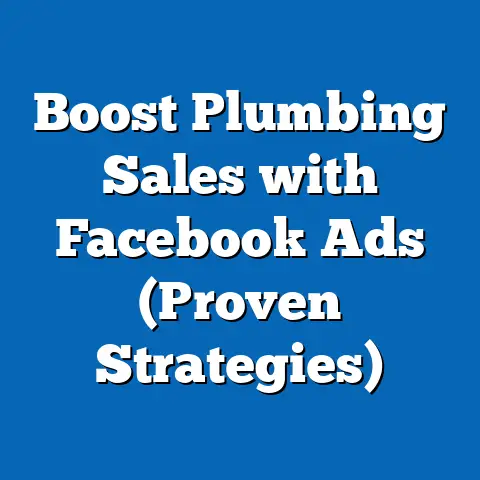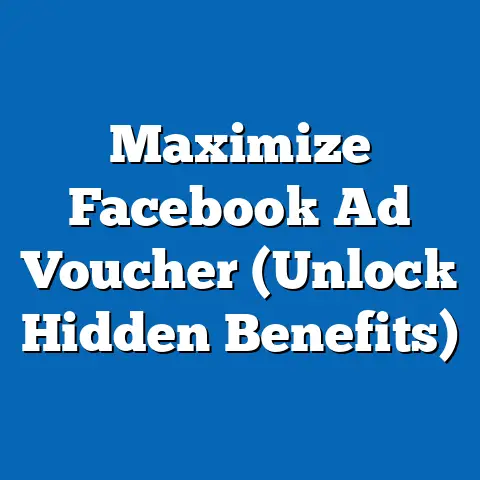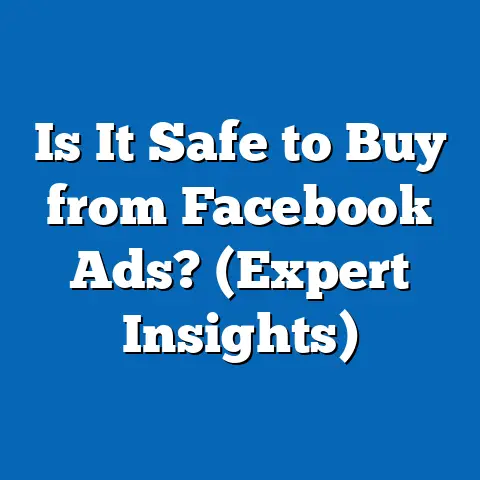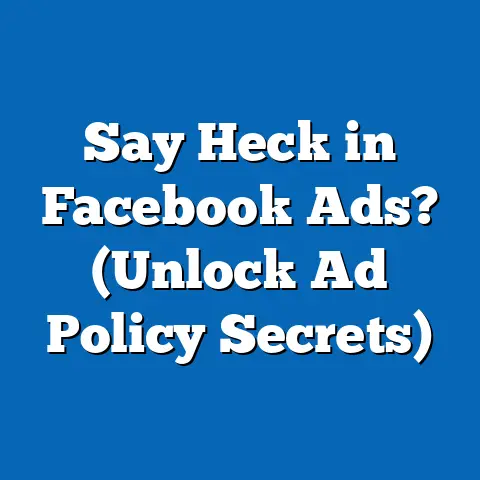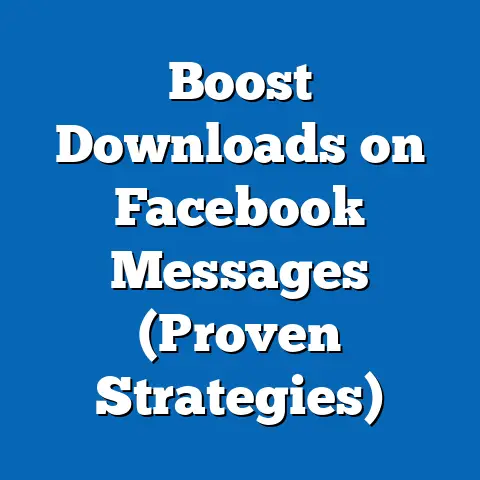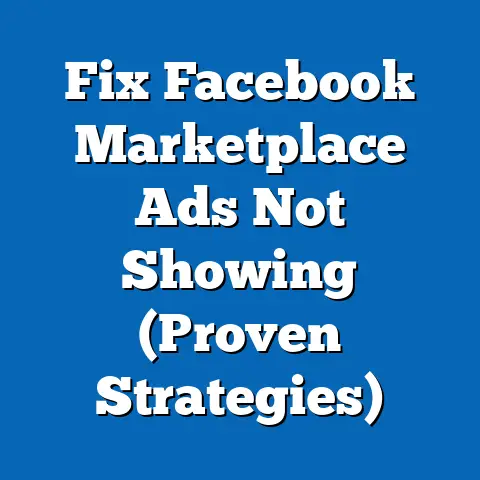Unlocking Facebook Ad Comments (Essential Guide)
The world of social media advertising is in constant flux. What worked yesterday might be obsolete tomorrow. But one thing remains consistently powerful: engagement. And within Facebook’s vast advertising ecosystem, one often-overlooked area of engagement is the comment section. I’ve spent years crafting Facebook ad campaigns, and I’ve seen firsthand how crucial understanding and leveraging Facebook ad comments can be. They’re not just noise; they’re a goldmine of customer feedback, insights, and opportunities to build a thriving community around your brand.
Think of it this way: your Facebook ad is the initial bait, but the comments are where the real conversation happens. It’s where potential customers voice their questions, share their concerns, and ultimately decide whether or not to take the leap and engage with your product or service. Ignoring this space is like throwing money into a wishing well and never checking to see if your wish came true.
This guide is designed to be your comprehensive resource for unlocking the potential of Facebook ad comments. We’ll delve into strategies for managing, analyzing, and utilizing these comments to not only enhance engagement but also to dramatically improve the performance of your ad campaigns. Whether you’re a seasoned marketing pro or just starting out, I’m confident that the insights you’ll gain here will transform how you view and interact with this vital aspect of Facebook advertising.
We’ll explore practical tactics, real-world examples, and data-driven insights that you can implement immediately. Get ready to turn those comments into a powerful force for growth!
Understanding Facebook Ad Comments
Before diving into strategies, it’s crucial to understand the fundamental role comments play in the context of Facebook advertising. They’re more than just random thoughts; they’re a direct line to your audience’s perceptions and motivations.
The Role of Comments in Advertising
Comments are a powerful form of social proof. When potential customers see others engaging with your ad, asking questions, and sharing positive experiences, it builds trust and credibility. According to a recent study by Nielsen, 92% of people trust recommendations from friends and family over advertising. While comments aren’t exactly recommendations from close contacts, they still carry significant weight because they represent authentic, unbiased opinions.
Consider this: I once ran a campaign for a local bakery advertising their new line of gluten-free pastries. The ad itself was visually appealing, but the comment section exploded with questions about ingredients, sourcing, and cross-contamination policies. By actively responding to these concerns and providing transparent answers, we not only reassured potential customers but also positioned the bakery as a trustworthy and health-conscious brand. The result? A significant increase in sales of the gluten-free line.
This anecdote illustrates a crucial point: comments can make or break your ad campaign. Ignoring them is akin to ignoring your customers’ direct feedback, which can lead to missed opportunities and even damage your brand’s reputation.
Types of Comments
Not all comments are created equal. Understanding the different types of comments you’re likely to encounter is essential for effective management and response. Here’s a breakdown:
- Positive Feedback: These are the gems you want to amplify! They express satisfaction, appreciation, or excitement about your product or service.
- Negative Feedback: These can be challenging, but they’re also invaluable learning opportunities. They highlight areas where you can improve your product, service, or customer experience.
- Questions: These indicate interest and a desire for more information. Answering questions promptly and thoroughly can convert curious onlookers into paying customers.
- Spam: These are irrelevant or unsolicited comments that clutter your comment section. They should be removed immediately to maintain a professional and trustworthy environment.
- Neutral Comments: These are often informational or simply acknowledge the ad without expressing strong positive or negative sentiment.
- Controversial Comments: These can spark debate or disagreement and require careful moderation to prevent them from escalating into unproductive arguments.
Knowing which type of comment you’re dealing with allows you to tailor your response accordingly. A positive comment deserves a thank you and perhaps an invitation to share their experience further. A negative comment requires empathy, understanding, and a commitment to resolving the issue.
Comment Moderation
Imagine walking into a store where the shelves are cluttered, the floor is dirty, and the staff is nowhere to be found. That’s the impression you create when you neglect comment moderation on your Facebook ads. A well-moderated comment section is a clean, inviting space where potential customers feel comfortable engaging with your brand.
The risks of unchecked negative comments are significant. They can:
- Damage your brand’s reputation
- Deter potential customers
- Create a negative association with your product or service
- Spread misinformation
Conversely, the benefits of fostering positive discussions are numerous:
- Build trust and credibility
- Encourage engagement
- Provide valuable feedback
- Create a sense of community
- Amplify positive sentiment
Comment moderation isn’t just about deleting negative comments; it’s about creating a positive and informative environment where customers feel valued and heard. It’s about actively shaping the narrative around your brand.
Key Takeaway: Understanding the different types of comments and implementing a proactive moderation strategy are essential for harnessing the power of Facebook ad comments. Don’t let your comment section become a neglected wasteland; cultivate it into a thriving garden of customer engagement.
Strategies for Engaging with Comments
Now that we understand the importance of Facebook ad comments, let’s dive into practical strategies for engaging with them effectively. It’s not enough to simply monitor comments; you need to actively participate in the conversation and shape it in a way that benefits your brand.
Active Monitoring
You can’t respond to comments you don’t see. Active monitoring is the foundation of effective comment engagement. This involves regularly checking your Facebook ad comment sections to identify new comments and respond to them promptly.
Here are some tools and techniques I use for active monitoring:
- Facebook Ads Manager: This is your primary tool for managing your ads and monitoring their performance, including comments. Make it a habit to check the comment sections of your active ads daily.
- Facebook Business Suite: This tool provides a unified inbox for managing all your Facebook and Instagram messages and comments. It’s a great option if you’re managing multiple accounts.
- Social Media Management Tools: Platforms like Hootsuite, Sprout Social, and Buffer offer advanced monitoring features, including keyword alerts and sentiment analysis. These tools can be particularly helpful for larger brands with a high volume of comments.
- Notifications: Configure your Facebook notifications to alert you whenever someone comments on your ads. This ensures that you don’t miss any important comments.
Beyond simply using the right tools, it’s also important to establish a consistent monitoring schedule. I recommend checking your comment sections at least once a day, and more frequently during peak advertising periods. The faster you respond to comments, the more engaged your audience will be.
Responding to Comments
Responding to comments is where the real magic happens. It’s your opportunity to build relationships with potential customers, address concerns, and shape the narrative around your brand.
Here are some best practices for responding to comments:
- Be Prompt: Respond to comments as quickly as possible. This shows that you’re attentive and value your customers’ time.
- Be Authentic: Avoid generic, canned responses. Personalize your responses to address the specific concerns or questions raised in the comment.
- Be Empathetic: Even if you disagree with a comment, acknowledge the commenter’s perspective and show that you understand their concerns.
- Be Helpful: Provide helpful information and solutions to address the commenter’s needs.
- Be Professional: Maintain a professional and respectful tone in all your responses, even when dealing with negative comments.
- Be Concise: Keep your responses brief and to the point. Avoid rambling or getting bogged down in technical jargon.
- Proofread: Always proofread your responses before posting them to ensure that they’re free of errors.
Remember, every comment is an opportunity to showcase your brand’s personality and values. Use your responses to build trust, demonstrate expertise, and create a positive impression.
Encouraging Engagement
While responding to comments is important, it’s even better to proactively encourage engagement in the first place. The more comments you receive, the more opportunities you have to connect with your audience and gather valuable feedback.
Here are some strategies for encouraging more comments on your ads:
- Ask Questions: Pose questions in your ad copy or in your responses to comments. This invites people to share their thoughts and opinions.
- Run Polls: Create polls within your ads to gather feedback and encourage participation.
- Host Contests: Run contests or giveaways that require people to comment on your ads to enter.
- Use Humor: Injecting humor into your ads and responses can make them more engaging and shareable.
- Create a Sense of Community: Encourage people to share their experiences and connect with each other in the comment section.
- Highlight Positive Comments: Feature positive comments in your ad copy or in your responses to other comments. This reinforces positive sentiment and encourages others to share their own positive experiences.
I recall a campaign I ran for a local coffee shop. We created an ad featuring a photo of their signature latte and asked, “What’s your favorite way to start the day?” The comment section exploded with responses, ranging from coffee preferences to morning routines. We actively participated in the conversation, sharing our own favorite ways to start the day and highlighting interesting responses. The result was a significant increase in brand awareness and foot traffic to the coffee shop.
Key Takeaway: Active monitoring, thoughtful responses, and proactive engagement strategies are essential for maximizing the value of Facebook ad comments. Don’t just let comments sit there; use them as a springboard for building relationships, gathering feedback, and shaping the narrative around your brand.
Analyzing Comment Data
Engaging with comments is only half the battle. The real power of Facebook ad comments lies in the data they provide. By analyzing comment data, you can gain valuable insights into your audience’s perceptions, preferences, and pain points. This information can then be used to refine your ad campaigns, improve your products and services, and ultimately drive better results.
Data Collection Methods
The first step in analyzing comment data is to collect it. There are several methods you can use, depending on your needs and resources:
- Manual Tracking: This involves manually reading and categorizing comments. While time-consuming, it can be a good option for small businesses with a low volume of comments. I’ve used this method in the past for smaller campaigns, creating a simple spreadsheet to track sentiment and recurring themes.
- Spreadsheet Software: Tools like Microsoft Excel or Google Sheets can be used to organize and analyze comment data. You can create columns for sentiment, keywords, and other relevant information.
- Social Media Analytics Tools: Platforms like Hootsuite, Sprout Social, and Buffer offer built-in analytics features that can help you track comment volume, sentiment, and engagement.
- Sentiment Analysis Tools: These tools use natural language processing (NLP) to automatically analyze the sentiment of comments. This can save you a significant amount of time and effort.
- Facebook Insights: Facebook provides some basic comment analytics within Ads Manager, including the total number of comments and the average sentiment.
The method you choose will depend on the volume of comments you’re receiving and the level of detail you need. For larger campaigns with a high volume of comments, a combination of social media analytics tools and sentiment analysis tools is often the best option.
Sentiment Analysis
Sentiment analysis is the process of determining the emotional tone of a piece of text. In the context of Facebook ad comments, sentiment analysis can help you understand whether your audience is generally positive, negative, or neutral about your ads and your brand.
There are several ways to perform sentiment analysis:
- Manual Sentiment Analysis: This involves manually reading each comment and assigning it a sentiment score (e.g., positive, negative, neutral).
- Automated Sentiment Analysis: This uses NLP algorithms to automatically analyze the sentiment of comments. There are many sentiment analysis tools available, both free and paid.
When performing sentiment analysis, it’s important to consider the context of the comment. A comment that appears negative on the surface may actually be positive in context. For example, a comment that says “This is too expensive!” may actually be a sign that people are interested in your product but are looking for a discount.
Identifying Trends
Once you’ve collected and analyzed your comment data, the next step is to identify trends. This involves looking for patterns and themes that emerge from the data.
Here are some trends you might look for:
- Recurring Questions: Are people asking the same questions repeatedly? This could indicate that your ad copy is unclear or that you need to provide more information about your product or service.
- Common Concerns: Are people expressing similar concerns about your product or service? This could indicate a problem with your product or service that needs to be addressed.
- Positive Feedback Themes: Are people praising your product or service for specific reasons? This can help you identify your strengths and focus on what you’re doing well.
- Negative Feedback Themes: Are people criticizing your product or service for specific reasons? This can help you identify areas where you need to improve.
- Sentiment Shifts: Is the overall sentiment of comments changing over time? This could indicate that your ad campaign is becoming more or less effective.
Identifying trends in comment data can provide valuable insights into your audience’s perceptions and preferences. This information can then be used to refine your ad campaigns, improve your products and services, and ultimately drive better results.
Key Takeaway: Analyzing comment data is essential for understanding your audience and optimizing your Facebook ad campaigns. By collecting, analyzing, and identifying trends in comment data, you can gain valuable insights that can help you improve your products, services, and marketing efforts.
Leveraging Comments for Marketing Insights
The insights gleaned from analyzing Facebook ad comments can be a game-changer for your marketing strategy. It’s about more than just responding to individual comments; it’s about using the collective wisdom of your audience to inform your decisions and drive better results.
Feedback Loop
Comments provide a direct feedback loop for refining your ad content and strategies. This feedback loop works like this:
- Launch Ad Campaign: You launch a Facebook ad campaign with specific goals and targeting.
- Monitor Comments: You actively monitor the comment section of your ads.
- Analyze Data: You analyze the comment data to identify trends, sentiment, and recurring themes.
- Refine Ad Content: You use the insights gained from the comment data to refine your ad copy, visuals, and targeting.
- Relaunch Ad Campaign: You relaunch the ad campaign with the refined content and targeting.
- Repeat: You continue to monitor, analyze, and refine your ad campaigns based on the feedback you receive from comments.
This feedback loop allows you to continuously improve your ad campaigns and ensure that they’re resonating with your target audience.
Let me share an example. I was running a campaign for a fitness studio promoting a new workout program. The initial ad copy focused on the program’s intensity and calorie-burning potential. However, the comment section was filled with concerns about the program being too difficult for beginners.
Based on this feedback, we revised the ad copy to emphasize the program’s scalability and the availability of modifications for all fitness levels. We also added a video testimonial from a beginner who had successfully completed the program. The result was a significant increase in registrations for the program.
User-Generated Content
Positive comments can be a goldmine of user-generated content (UGC) that can be repurposed in future marketing campaigns. UGC is any content created by your customers, such as testimonials, reviews, photos, and videos.
UGC is incredibly powerful because it’s authentic and trustworthy. People are more likely to trust recommendations from their peers than they are from brands.
Here are some ways you can leverage positive comments as UGC:
- Share Testimonials: Feature positive comments as testimonials in your ad copy or on your website.
- Create Case Studies: Turn positive comments into case studies that showcase the benefits of your product or service.
- Repurpose Photos and Videos: Ask customers for permission to use their photos and videos in your marketing materials.
- Run a UGC Contest: Encourage customers to create content about your brand and offer prizes for the best entries.
When using positive comments as UGC, be sure to:
- Ask for Permission: Always ask customers for permission before using their comments or content.
- Give Credit: Give credit to the original author of the comment or content.
- Be Authentic: Don’t edit or alter the comment in any way that would misrepresent the customer’s opinion.
Building Community
Engaging with comments can foster a sense of community around your brand, leading to increased loyalty and customer retention. When customers feel like they’re part of a community, they’re more likely to stay loyal to your brand and recommend it to others.
Here are some ways to build community through comment engagement:
- Respond to All Comments: Respond to all comments, both positive and negative. This shows that you value your customers’ opinions and are willing to engage with them.
- Ask Questions: Ask questions to encourage discussion and interaction among your customers.
- Create a Facebook Group: Create a Facebook group where customers can connect with each other and share their experiences with your brand.
- Host Events: Host online or offline events where customers can meet each other and connect with your brand.
- Recognize and Reward Loyal Customers: Recognize and reward loyal customers who are active in the comment section.
Building community takes time and effort, but it’s well worth the investment. A strong community can provide invaluable support, feedback, and advocacy for your brand.
Key Takeaway: Facebook ad comments are a valuable source of marketing insights that can be used to refine your ad campaigns, improve your products and services, and build a strong community around your brand. By leveraging comments for feedback, UGC, and community building, you can unlock the full potential of Facebook advertising.
Case Studies and Best Practices
To further illustrate the power of Facebook ad comments, let’s examine some real-world case studies and best practices. These examples will demonstrate how brands have successfully leveraged comments to achieve their marketing goals.
Successful Campaigns
- Dove’s #RealBeauty Campaign: Dove’s #RealBeauty campaign is a classic example of how to use Facebook advertising to spark conversation and build community. The campaign featured ads that challenged traditional beauty standards and celebrated the diversity of women’s bodies. The comment sections of these ads were filled with women sharing their own stories and experiences, creating a powerful sense of community and empowerment. Dove actively engaged with these comments, responding to questions, offering support, and highlighting inspiring stories. The campaign was a huge success, generating millions of comments and shares and significantly boosting Dove’s brand image.
- Airbnb’s “Live There” Campaign: Airbnb’s “Live There” campaign aimed to promote the unique experiences that travelers can have when staying in Airbnb properties. The campaign featured ads that showcased local neighborhoods and offered tips from Airbnb hosts. The comment sections of these ads were filled with travelers asking questions about the destinations and sharing their own travel experiences. Airbnb actively responded to these comments, providing helpful information and connecting travelers with local hosts. The campaign was a success, driving increased bookings and building a strong sense of community among Airbnb users.
- Warby Parker’s Socially Conscious Ads: Warby Parker, known for its stylish and affordable eyewear, often runs Facebook ads that highlight its social mission of providing glasses to people in need. These ads typically feature engaging visuals and compelling stories about the impact of their “Buy a Pair, Give a Pair” program. The comment sections of these ads are filled with positive feedback, with customers expressing their support for the company’s mission and sharing their own experiences with Warby Parker. The company actively responds to these comments, thanking customers for their support and providing updates on their social impact initiatives. By showcasing their commitment to social responsibility and engaging with customers in the comment section, Warby Parker has built a loyal following and solidified its brand image as a socially conscious company.
Lessons Learned
These case studies highlight several key lessons about leveraging Facebook ad comments:
- Spark Conversation: Create ads that are designed to spark conversation and encourage engagement.
- Be Authentic: Be authentic and genuine in your responses to comments.
- Build Community: Foster a sense of community among your customers.
- Leverage UGC: Repurpose positive comments as user-generated content.
- Be Socially Conscious: Highlight your brand’s social mission and engage with customers who share your values.
Future Trends
Looking ahead, here are some future trends to watch in comment engagement and management on social media:
- AI-Powered Sentiment Analysis: AI-powered sentiment analysis tools will become more sophisticated and accurate, allowing brands to better understand the emotional tone of comments.
- Automated Comment Moderation: Automated comment moderation tools will help brands to quickly and efficiently remove spam and inappropriate comments.
- Personalized Responses: AI-powered chatbots will be used to provide personalized responses to comments, based on the commenter’s individual needs and preferences.
- Voice-Based Commenting: Voice-based commenting will become more prevalent, allowing users to leave comments using their voice instead of typing.
- Augmented Reality (AR) Comments: AR comments will allow users to leave comments that are overlaid on top of the real world.
These trends will create new opportunities for brands to engage with their audience and gather valuable feedback.
Key Takeaway: By studying successful campaigns, learning from best practices, and staying ahead of future trends, you can unlock the full potential of Facebook ad comments and achieve your marketing goals.
Conclusion
In conclusion, Facebook ad comments are a powerful but often overlooked aspect of social media advertising. They represent a direct line to your audience, providing invaluable insights into their perceptions, preferences, and pain points. By actively managing, analyzing, and leveraging comments, you can enhance engagement, build community, and drive better results from your ad campaigns.
Recap of Key Points
Throughout this guide, we’ve covered several key points:
- Comments are a powerful form of social proof.
- Active monitoring, thoughtful responses, and proactive engagement strategies are essential for maximizing the value of Facebook ad comments.
- Analyzing comment data is essential for understanding your audience and optimizing your Facebook ad campaigns.
- Facebook ad comments are a valuable source of marketing insights that can be used to refine your ad campaigns, improve your products and services, and build a strong community around your brand.
- By studying successful campaigns, learning from best practices, and staying ahead of future trends, you can unlock the full potential of Facebook ad comments and achieve your marketing goals.
The Road Ahead
The future of Facebook ads and comments is constantly evolving. As technology advances and consumer behaviors change, new opportunities will emerge for brands to engage with their audience and gather valuable feedback.
To succeed in this ever-changing landscape, you need to be proactive, adaptable, and willing to experiment. Embrace new tools and techniques, stay informed about the latest trends, and always be looking for ways to improve your comment engagement strategy.
The brands that embrace this evolving landscape and prioritize comment engagement will be the ones that thrive in the years to come.
Key Takeaway: Don’t underestimate the power of Facebook ad comments. By actively managing, analyzing, and leveraging comments, you can unlock new opportunities for growth and build stronger connections with your audience.
Call to Action
Now it’s your turn! I encourage you to share your own experiences and strategies related to Facebook ad comments in the comments section below. What has worked well for you? What challenges have you faced? What advice do you have for other marketers?
Let’s create a community where we can learn from each other and unlock the full potential of Facebook ad comments together!

